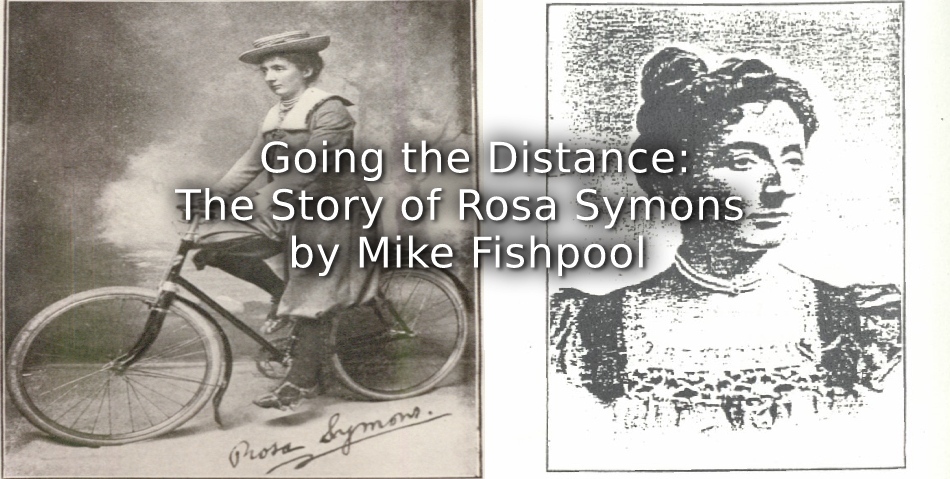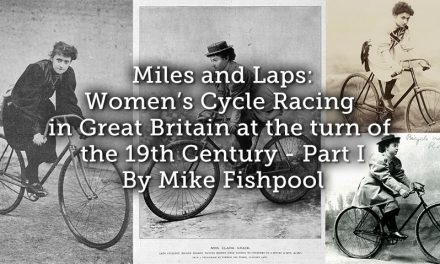The early 1900s saw a number of women setting new British road endurance records aiming to break down gender barriers by riding for as long and as far as possible.These intrepid women included Maggie Foster (London to Brighton), Alice Andrews (southern 12-hour), Mrs Bell (paced 12-hour) and Kate Green (northern 12 and 24-hour). There were others, but notable was a vegetarian cyclist named Rosa Symons who repeatedly tackled a substantial ride that included the legendary Land’s End to John O’Groats route, aiming to do it each time in a record time.

The current 874-mile End-to-End route, now commonly dubbed ‘Lejog’, or ‘Jogle’ if done in reverse, has become associated with those riders whose records were officially recognised by the Women’s Road Record Association (WRRA) formed in 1934. These legendary riders need no detailing here but comprise Lilian Dredge (1938), Marguerite Wilson (1939), Edith Atkins (1953) and Eileen Sheridan (1954). Now under the auspices of the Roads Records Association (RRA), the current women’s record was set by Lynne Taylor in 2002, while Jane Moore set the tricycle record in 2014. Since then, three women have unsuccessfully tried to trump Taylor’s record of two days and nearly five hours: Jasmijn Muller (2017 and 2018), Christina Mackenzie (2019) and Christina Murray (2020).
What is remarkable about Rosa Symons though is that she set out from and returned to London (starting and finishing at Marble Arch), or went direct from London to John O’Groats and then down to Land’s End and back to London. In a letter to the editor of the Croydon Guardian and Surrey County Gazette in 1907, Rosa wrote: “I have never attempted the Land’s End to John O’Groats record. What I have been aiming at is something more ambitious. […] This you will find is more than double the distance. It means taking the hills on both sides, and facing the wind for a great part of the journey.” Astonishingly, she did these rides seven times between 1902 and 1907, including twice in those years, riding upon a 23-inch, two-speed gents James bicycle for the first four years and then a three-speed Beeston-Humber roadster. Covering 1,860 miles each trip, her training for the rides comprised 11,000 to nearly 13,000 miles a year. The only year that she did not ride was in 1905. Only her last three rides in 1906-1907, which were also the fastest, actually went direct to Land’s End onto John O’Groats.
Of the seven rides, which Rosa financed herself, she only had to set and beat her own times, starting with 25 days, one hour and 47 minutes in June 1902 and finishing in her fastest time and what was her last ride in September 1907 of 14 days exactly, clocking an average of 133 miles a day compared to 74 miles in June 1902. Rosa also rode from London to York in just over 16 hours in July 1906. She wrote an autobiographical account of her rides and other activities that was published in 1908, fully entitled: Seven Times Round Great Britain or Cycling for Health and Strength with Practical Hints on Physical Culture.
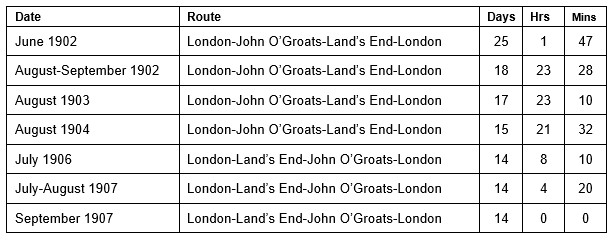
Rosa Symons’s rides
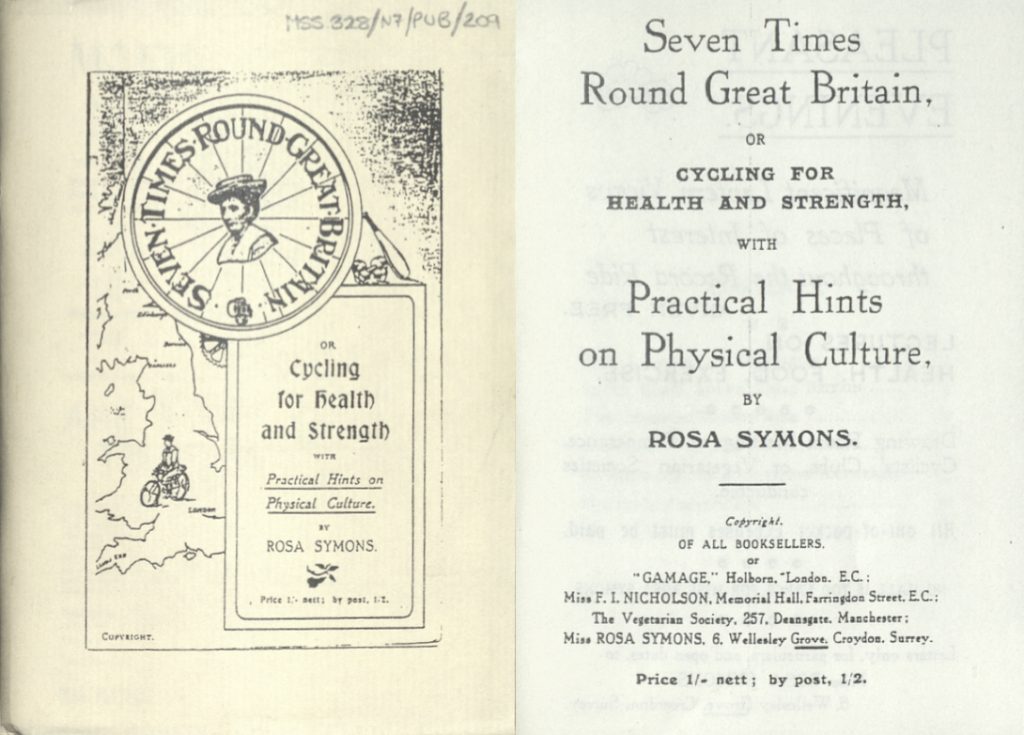
Who was Rosa Symons?
The 1901 census lists an all-female Symons family living at 6 Wellesley Grove, Croydon (as listed in Seven Times Round Great Britain). The head of the household was Angelina Symons, aged 65, a widow living by her own means. There were three daughters: the eldest was Emma, aged 32, who was listed as a physical teacher by profession; interestingly, it also has “school e” scribbled in pencil. The youngest daughter was Mary Gertrude, aged 29. The middle daughter was 30-year old Sarah Rosa, born in Chelsea in 1871, although the England and Wales births and the 1871 census actually give her birth year as 1869, making her 32 in 1901. It can be presumed then that she preferred to be known by her middle name; no profession was listed. The Dundee Evening Post reported in August 1903 that she had previously been a gymnastics instructor. Her book included a chapter entirely devoted to waist exercises where she states that she is a “fully qualified teacher of Physical Culture, and taught for ten years at Colleges and Schools”. An advert in the Eastbourne Gazette from June 1899 corroborates this plus Rosa’s full name, stating: “Gymnastics and Drill – Miss S.R. Symons, Visiting Teacher at Bexhill-on-Sea, London […] is open to Engagements; 10 years’ experience”. It lists her as a Member of the British College of Physical Education (M.B.C.P.E.) so clearly the profession (and age) listing in the 1901 census was assigned to the wrong Symons sister.
Rosa occasionally arranged public demonstrations of exercises and gymnastics. She oversaw a ladies’ gymnastics display at the Lecture Hall in Sydenham in 1895, which was fully reviewed in the upmarket journal The Queen. A further display of gymnastics (as well as musical drills) was held at the same venue a year later with Rosa demonstrating routines on parallel bars. Several performances also took place around London in 1903-1904, including at Stanley Hall, South Norwood where Rosa demonstrated exercises using dumbbells and undertook gymnastic displays before delivering spoken recitals with other performers. These later performances, which included music and acting, were assisted by professional elocutionists and Rosa undertook elocution lessons at Thornton Heath and South Northwood Polytechnics at least up to 1905 (thus explaining “school e” in the census), presumably to improve her public speaking having regularly delivered recitals of popular stories and plays to audiences at events as late as 1909. As well as privately teaching gymnastics, she also offered lectures on her cycling as well as on health, food and exercise. Some newspapers mentioned that she regularly lectured on food reform and sanitation. She additionally advertised her services as a masseuse and dietician after 1908.
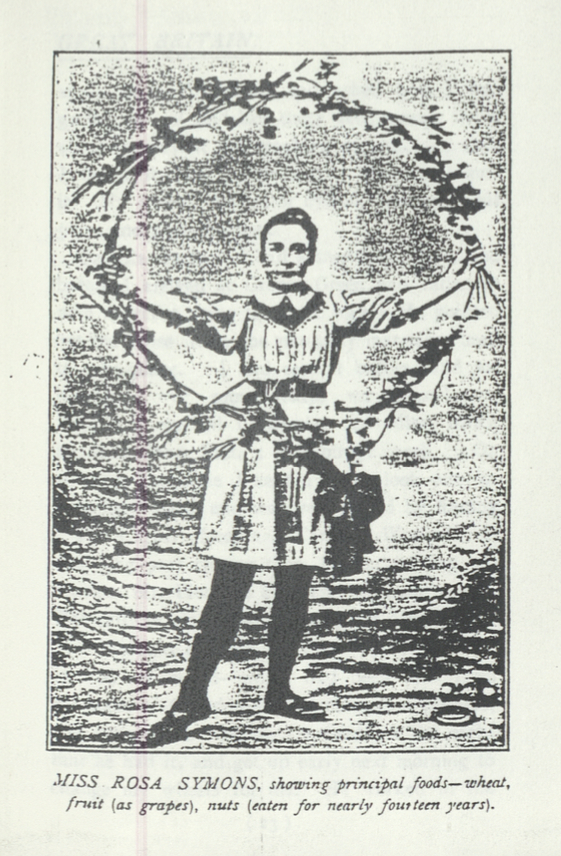
The Vegetarian Cyclist
Rosa claimed that she was in poor health as a child and teenager, being under the care of a homeopathic doctor and a patient at a London hospital due to recurrent “ulcerated sore throats” that dogged her health for 11 years, even being considered life threatening at one point. Some recovery followed, although she was “apparently an invalid for life” once she had completed hospital treatment after nearly two years. However, Rosa went to see the renowned British physician and businessman Thomas Allinson, best known for his vegetarian activism from the late 19th Century and also the original recipe for Allinsons bread – an advertisement for that very product features in Seven Times Round Great Britain. He persuaded her to go vegetarian and it was this, as well as removing pulses from her diet, that she claimed returned her to full health and then to start cycling distances – her epic rides were often fuelled by a diet of fruits, nuts and honey washed down with hot milk. It was her vegetarian lifestyle over a 14-year period that would become one of her main selling points and something that she would promote at organised events, such as local branches of the Vegetarian Society.
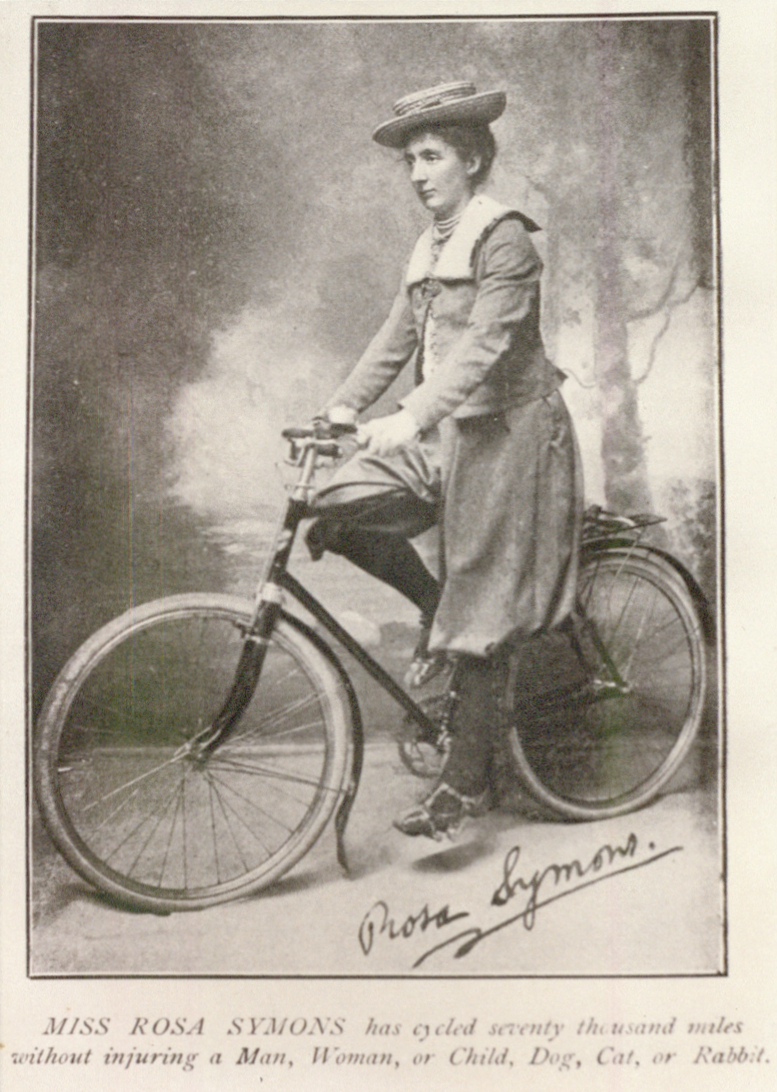
Similarly promoted by Rosa was rational dress, which she always wore during her rides – she rode nearly 47,150 miles up to 1908 in rational dress. A Mackintosh was also worn on wetter days. Her rational dress initially earned her the nickname of ‘Lady Bloomers’ before newspapers started calling her the ‘World’s Lady Champion’. Rosa had an article published in 1902 in The Rational Dress Gazette providing 16 reasons why she wore rational dress where she stated that it was because: “I am not ashamed of my legs […] and to escape the society of narrow-minded people”, but also included comfort and physical freedom, wind resistance, cleanliness and safety. Her outfit may have been why she complained that a large crowd followed her in Edinburgh in 1902 after she had finished one ride for the day even “though I had my skirt on”, leaving her to seek refuge in a police station. It appears that she was refused admittance to several hotels due to her rational dress and always slipped on a skirt after a ride to reduce potentially raised eyebrows.
In October 1903, multiple newspapers sensationally depicted Rosa as a lady burglar after having to break into the historic John O’Groats Hotel after finishing her ride for the day, sleeping covered in newspapers after a long hot bath and scaring a servant maid who discovered her the next morning. She later set the record straight on the story, stating that the hotel had actually been expecting her by leaving the window open.
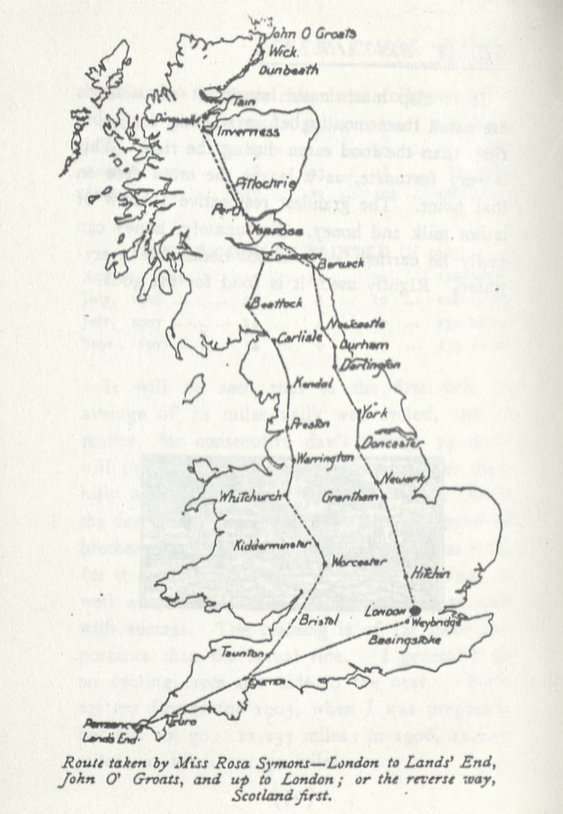
Rosa’s rides were generally uneventful despite being regularly dogged by the British weather, poor road surfaces, punctures, emergency repairs to her bicycle and road obstructions like cattle. She was sometimes accompanied by male cyclists along the way but mostly rode alone and often through the night or in the early hours of the morning guided only by her bicycle’s lamp. In Seven Times Round Great Britain, Rosa only wrote of experiencing loneliness when she was cycling through the barren Ord of Caithness en route to John O’Groats.
There is little to corroborate all her rides as done with later official records, other than her own words and the regular newspaper reports that detailed her progress during each ride. She also had timed checkpoints along the route, using her own watch and a notebook for timekeeping. Nevertheless, the Rosa Symons story is about a determined woman at the start of the 20th Century going further and for longer, encompassing an iconic British route as part of her cycling ride. Something that is even a mental and physical challenge for the women that attempt the shorter official route record in the present era.
Article © of Mike Fishpool
Author’s note:
The author wishes to thank the Modern Records Centre, University of Warwick and Dag Hammar for assistance whilst researching Rosa Symons. I thought Rosa was the first recorded female cyclist to ride the Lejog/Jogle route but an Evelyn Burnaby wrote a book published in 1893 entitled A Ride From Land’s End to John O’Groats describing cycling the route with her brother over 45 days, although she wasn’t trying to set any record time as it was a touring trip. The London Daily News also mentioned a woman named Gertrude Anderson who cycled from Land’s to John O’Groats with her husband in mid-1902. Further details were in the newspaper Cycling in July 1902 detailing the ride with an average of 90 miles ridden daily on a pair of New Rapid bicycles, totalling 895 miles over ten days. This was a little reported ride but could be considered the first (unofficial) female record specifically on the Lejog route alone, even if she was accompanied and was certainly much faster than Evelyn Burnaby. At the time of writing, Scottish cyclist Christina Mackenzie has been planning another attempt at the official women’s Lejog record in July 2021 having completed the course in a time of two days, seven hours and 19 minutes in 2019 – the third fastest women’s time and the fastest female Scottish rider. No doubt, there will be others in the coming years. For further reading on the history of the official Lejog record, I’d recommend End to End: The Land’s End to John O’Groats Cycling Record – A Tale of Obsession, Hallucination and Happiness by Paul Jones (Little Brown, 2021).
Images [Except Image 4]; Courtesy of MRC, University of Warwick.
Image 4: A rare photo of Rosa Symons, pictured on the James bicycle that she rode upon until 1905. She had actually tried to sell the bike in late 1903 through the classified section of the newspaper Cycling. It came well-equipped for long distance riding with mudguards, a rear pannier rack and a bell, but was probably difficult to ride up hills with only two gears.

